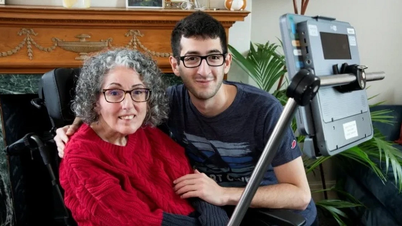Scientists at the country's Weizmann Institute have just announced a groundbreaking discovery.
According to research, with just a simple blood test, it can help detect the risk of leukemia, potentially replacing the invasive procedure of taking bone marrow samples in current diagnosis.
The research was carried out by Professor Liran Shlush's team, which included experts in haematology, evolutionary biology and data science. The team is delving into the biology of the blood to understand why some people are at increased risk of disease as they age.
The team found that about a third of people over 40 have genetic mutations in their blood-forming stem cells - a factor that not only increases the risk of leukemia but is also linked to cardiovascular disease, diabetes and other age-related conditions.
The study focused on myelodysplastic syndrome (MDS), an age-related disease in which blood stem cells fail to develop into normal blood cells. Early and accurate diagnosis of MDS is important, as the syndrome can lead to severe anemia and progress to acute myeloid leukemia, one of the most common blood cancers in adults.
Currently, diagnosis of MDS relies primarily on bone marrow biopsy - an invasive procedure that requires anesthesia and causes discomfort to the patient.
However, Shlush’s team discovered that some rare blood stem cells that leave the bone marrow and enter the peripheral blood carry diagnostic information about MDS. Using advanced single-cell sequencing technology, the team demonstrated that a simple blood test can detect early signs of the syndrome and assess the risk of developing leukemia.
In addition, the research team found that these migrating stem cells may act as a “biological clock” that reflects age. In particular, the number of these stem cells changes earlier in men than in women. This is thought to explain why men have a higher rate of malignant blood diseases.
Professor Shlush was also surprised to find that the number of stem cells varied significantly among healthy people. “Even in people without disease, the number of stem cells can be higher or lower than in other people,” he said. “Without understanding the variation in healthy people, we cannot define what is abnormal.”
Currently, these findings are being tested on a large scale in clinical trials at medical centers in Japan, Taiwan (China), Canada and the US./.
Source: https://www.vietnamplus.vn/xet-nghiem-dot-pha-giup-phat-hien-nguy-co-mac-benh-bach-cau-post1047362.vnp


































![[Photo] President Luong Cuong attends special political-artistic television show "Golden Opportunity"](https://vphoto.vietnam.vn/thumb/1200x675/vietnam/resource/IMAGE/2025/8/22/44ca13c28fa7476796f9aa3618ff74c4)







































































Comment (0)